|
Famous Temples of Odisha / Orissa
|
Sponsored Links
|
|
|
|
Shri Jagannatha Mandira, Puri, Odisha. |
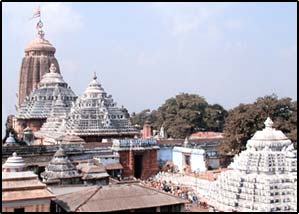
Shri Shri Jagannath Mahaprabhu lord of the Universe is the supreme solace and
saviour of countless devotees around the world. since time immemorial, His
monumental and magnificent Shrine at Shri Purusottam-Kshetra (Puri, Orissa) one
of the four major Dhamas of India has been a most sacred centre of pilgrimage
and worship symbolising and uploading one of the greatest spiritual and cultural
heritages of the world.
|
|
Surya Mandira (SUN Temple), Konark, Puri, Odisha.
|
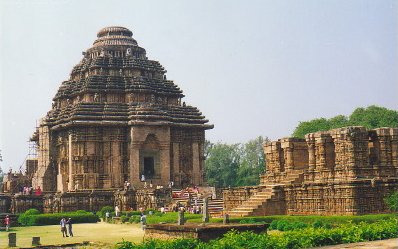
Konark is one of the well known tourist attractions of Orissa. Konark, Konark
houses a colossal temple dedicated to the Sun God. Even in its ruined state it
is a magnificient temple reflecting the genius of the architects that envisioned
and built it. Bhubaneshwar Konarkand Puri constitute the Golden triangle of
Orissa, visited in large numbers by pilgrims and tourists.
|
|
Sri Sri Baladev Jew Temple, Kendrapada, Odisha.
|
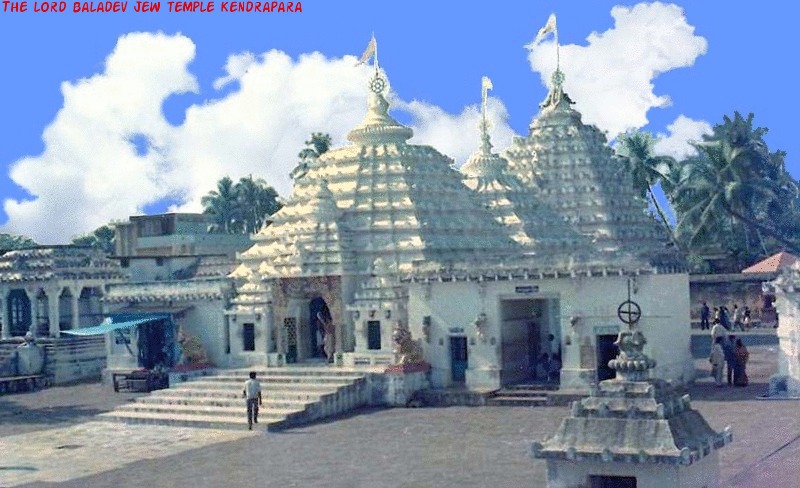
Sri Sri Baladev Jew Temple is situated in the small town Ichhapur, in Kendrapara
District, Orissa. Baladev Jew Temple is very famous temple in Orissa and Lord
Balabhadra is the main God of this temple. However Lord Jagannath, Devi Subhadra
are also worshiped here along with Lord Balabhadra in the Ratna Sinhasan in the
main temple.Idol of Goddess Tulasi in sitting position is there after the sacred
seven steps.
Architecture and Construction of Baladev Jew Temple Baladev Jew Temple is
constructed over an area of 2 acres of land. There are 2 parts in the total
area, in one part, different temples are there and another part is a beautiful
garden. There is a big boundary around the temple, which is 14 meters high.
There are four main parts of Baladev Jew Temple are Sri Mandir, Natya Mandir,
Bhoga Mandap and Mukhashala. The main temple height is 75 feet and width is 40
feet.
The main temple has a 7 step construction and heavy
baulamalia stone are used in this construction. There are other small temples
inside the premise, where other Gods and Goddesses are worshipped. All the
temples have a beautiful architecture and constructed in traditional way. The
other important parts of the temple are Garuda Stambha, Ratna Bhandar, Snana
Mandap, Mukti Mandap, Jhulan Gruha Rituals Followed in Baladev Jew Temple The
deities of Lord Baladev Jew, Lord Jagannath and Goddess Subhadra wear different
costumes and are decorated in different ways during different important
festivals. This tradition is known as Besha (alankara).The Rath Yatra here is
famous for the Brahma Taladhwaja Rath.
Some Important Alankara are - Sri Raghunatha Besha on Chaitra Purnima
Festival. Padma Besha on Kartik Purnima Festival and Tulsi Vivah in Kartik.
Gamhabhisheka Besha – From Shraavana Sukla Dashami to Purnima,holy srinakshatra
ceremony of Lord Balarama Pushyabhisheka Besha on Pausha Purnima festival Kanchi
Kaveri Besha on Vasant Panchami festival. Suna Besha (Bali Vamana Besha) on
Bhadrapad Dwadashi Day Krishna Balarama Besha on Phalguna Purnima festival
Offerings(Bhog) There are arrangements for 3 main Naivedya offerings (
Dhupa )and 3 minor offerings (Abakasha) for the deities daily. Morning offering
( Sakala Dhupa) Offering at pre-noon (Madhhyanna Dhupa) Rice offering (
Dwiprahara Dhupa/ Anna Dhupa) Offering at evening ( Sandhya Aarati Dhupa) Rice
offering ( Nisankhudi Dhupa) Offering at night ( Badasinghar Dhupa) Different
types of offerings (Prasad) are made with trained traditional families,called as
Supakara and Mekap are engaged solely for deities.
Some of the delicacies
are highly patronized in different historic regimes. A comprehensive list of the
delicacies is given below. Baula Gaintha, Upana Pitha, Mithei, Chaurashi
Vyanjana(84 vegetable Curry), Makara Chaula, Bhaja,Ghia Anna, Dali, Phalamula
(fruits), Dry sweets, Ghanavarta, Pura Kakara, Rasabali, Potali Pitha, Chipa
Kakara, Karanji, Khaja, Magaja Ladoo, Dalimba, Khuduma, Nishkudi, Mutha Gaja,
Tala, Chhena Chakata are the famous ones.
|
|
DevKund , Udala, Ambika temple, Devakunda waterfalls, Mayurbhanja, Odisha.
|
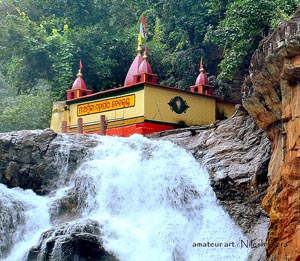
It is beautiful temple situated near Devakunda. Devee Ambika Temple (Incarnation
of Goddess Durga) is a temple which can spellbound every visitor. It is
surrouned by great waterfalls and think forest. This temple was built by the
royal dynasty of Mayurbhanj in 1940. More to allure you, there are multi colored
butterflies and chirping birds all around. In Devakunda. Large fishes come
closer and eats food offered by the visitors because fishing is prohibited as
this place is considered as the Goddess’ place.
Bus route: Regular private bus services to Udala (59 km). From Udala
jeeps are available to reach at Devakunda (28 km from Udala). The remaining 5 km
trail is through a thick forest surrounded with hills.
Train route: Nearest major railway station is at Balasore/Baleshwara.
Local trains connect to Baripada from where Devakund is more nearer.
Perfect for: Picnic, Wild Photography, Trekking, Sight seeing. Accommodations
available at: Balasore and Baripada Nearby spots: Similipal tiger reserve,
Khiching Kichakeshwari temple, Baripada, Devakunda waterfall, Balasore.
|
|
Baliharchandi Mandira, Near Konark - Puri Road, Puri, Odisha.
|
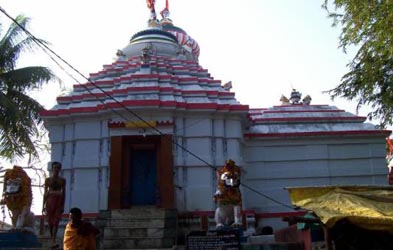
Baliharachandi is a temple dedicated to goddess Harachandi at 27km south west of
Puri on the national highway 203 leading from Puri towards Brahmagiri and
Satapada. On this road there is a place known as Kathuari chowk, from this chowk
take a left diversion and after 5 kilometers you will reach village Palanka,
this temple is located at a distance of 1 kilometer from the village Palanka.
This temple is dedicated to Goddess Durga and is mounted on a sandy hill near
the ocean.
The exact geographical location of this temple is
LONGITUDE 85041’39” E and LATITUDE 19045’28” N. Puri About this sound
pronunciation (Odia: ପୁରୀ ) is district headquarter, a city situated about 60
kilometres (37 mi) south of state capital Bhubaneswar, on the eastern coast of
the Bay of Bengal in the Indian state of Orissa.
It is also known as
Jagannath Puri after the Jagannath Temple (built in the late eleventh century).
It is a holy city of the Hindus as a part of the Char Dhampilgrimages. It is
considered that a pilgrimage of the temples of India is not complete without
making the journey to Puri. Puri also has one of the best beaches for swimming
in India and is also a popular beach resort, positioned in a unique place so
that both sunset and sunrise can be viewed from the beach.
|
|
Panchalingeshwar Temple, Nilagiri, Baleswara, Odisha.
|
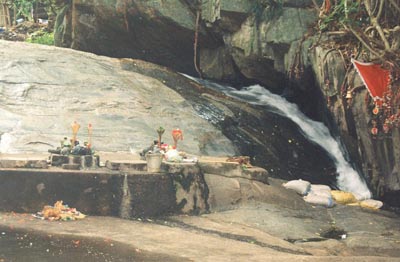
Panchalingeswara Temple is situated on the hilltop of the Eastern Ghats in
Panchalingeshwara, Nilagiri, Baleswar district. It's a beautiful place for
picnic, darshan of Shiva Linga and breath some fresh air from the real nature.
You can hire a car from Balasore/Baleshwara and open your glass while travelling
through the countside road to really feel the actual nature. From Balasore town
Your car goes straight till Sergarh. While travelling the prowdy Swarnachuda
Hills of Nilagiri looks foggy and enchanting. After 12 kms of straight drive you
need to take right from Sergarh and go straight till Nilagairi.
There you can stop for a while to taste the mouth watering sweets of at Kuchery
Bazaar, Nilagiri. They are really great. Then you can ask anyone the exact route
to Panchanlingeswara.Then drive through the country road till the waistline of
the hills of Panchanlingeswara. Park your car and start climbing the steps made
on the hills to see a panoramic view of the beautiful hill. It's green
everywhere except the sky and you. You can smell the freshness of wild flowers
and twitter of the winged fauna. A natural bio-reserve of thick flora and exinct
fauna could enamore you for a long time. On the top of the hill there is a hill
spring.
You can wash your hand but not your leg as
the water goes and touched Lord Shiva of the temple there. The five round "Shiva
Linga" are worshipped as Panchalingeswara (Pancha means five in Odia). The whole
pllace is a marvelous arrangement of spirituality and devotoin of God and
nature. Bus/Car route- From Balasore/Baleshwar regular bus/car service is
available. It's 12 km from Nilagiri town. Rail route- Nearest railroad is at
Balasore. From Balasore bus/car service is there. Hotel- There are good hotels
available in Balasore town. There is also a Government Panth Nivas available in
Panchalingeshwara. You can find a really good picnic spot for your friends and
family.
|
|
LingaRaj Temple, Bhubaneswar, Khurdha, Odisha.
|
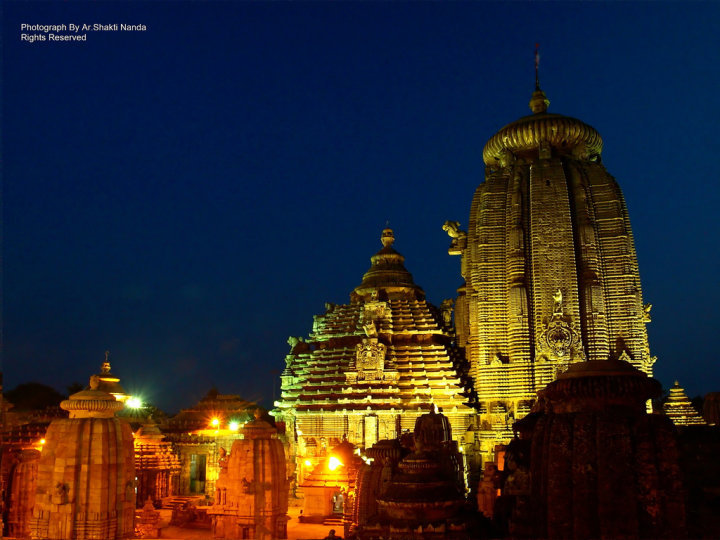
Lingaraj Temple is a temple of the Hindu god Shiva and is one of the oldest
temples of the Temple City Bhubaneswar, a revered pilgrimage center and the
capital of the state of Odisha.The temple of Lingaraja, the biggest of all at
Bhubaneswar is located within a spacious compound wall of latte rite measuring
520 feet by 465 feet. The wall is 7 feet 6 inches thick and surmounted by a
plain slant coping.
Alongside the inner face of the boundary
wall there runs a terrace probably meant to protect the compound wall against
outside aggression. Bhagaban Lingaraj is half Shiva and half Vushnu. HE is
neither worshiped with BEL leaf nor with only TULSI leaf. He is offered with
both BEL & TULSI leaf for puja There is one Bow (Dhanush) on top of the temple
unlike other Shiv Temple where TRISHUL is placed on top of the other Shiv
temples. The Shibalingam in the sanctum of the Lingaraja temple rises to a
height of 8 inches above the floor level, and is 8 feet in diameter. The
Bhagawati temple is located in the northwest corner of the courtyard. There are
several other shrines and temples in this vast courtyard.
History:- Lingaraaj means 'the king of Lingas', 'Linga' or 'Lingam' being
the symbol of Lord Shiva worship.The temple is more than 1000 years old, dating
back in its present form to the last decade of the eleventh century, though
there is evidence that parts of the temple have been there since sixth century
AD as the temple has been emphasized in some of the seventh century Sanskrit
texts.
This is testimony to its sanctity and importance as a Shiva shrine.
By the time the Lingaraj temple was constructed, the Jagannath (form of Vishnu)
cult had been growing, which historians believe is evidenced by the co-existence
of Vishnu and Shiva worship at the temple. Bhubaneshwar the capital of Orissa is
a city of temples, several of which are important from an architectural point of
view. The Lingaraj temple is the largest of these. It is about a thousand years
old.
|
|
RajaRani Temple, Bhubaneswar, Khurdha, Odisha.
|
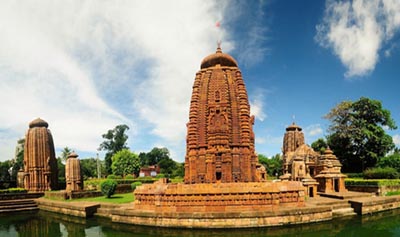
Konark is one of the well known tourist attractions of Orissa. Konark, Konark
houses a colossal temple dedicated to the Sun God. Even in its ruined state it
is a magnificient temple reflecting the genius of the architects that envisioned
and built it. Bhubaneshwar Konarkand Puri constitute the Golden triangle of
Orissa, visited in large numbers by pilgrims and tourists.
|
|
Kapilasa Mahadev Temple, Dhenkanal, Odisha.
|
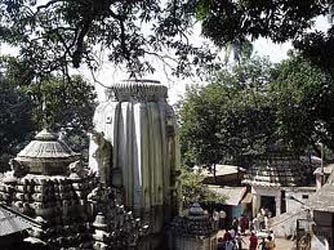
The temples are situated at a height of about 2239 feet from sea level. The main
tower of the temple is 60 feet tall. There are two approaches for the temple.
One is by climbing 1352 steps and the other is 'Barabanki' or travelling by the
twisting way.King Narasinghdeva I of Ganga Dynasty constructed the temple for
Sri Chandrasekhar in 1246 A.D as indicated in the Kapilash temple inscription.
In the left side of the temple the
'Payamrta kunda'and in the right side the 'Marichi kunda' exist. The temple has
a wooden Jagamohana. Sri Ganesh, Kartikeya, Gangadevi, etc. are found in the
temple. Patita pavana Jagannath is installed in the temple as the 'Parsa deva'.
Lord Vishwanath temple is also situated in Kapilas. According to some scholars
this temple is older than the Chandrasekhar temple, hence it is known as 'Budha
linga'. There are many legends about Kapilash pitha and its significance.
Tradition describes it as the ashram of Kapila, to some scholars it is the
second Kailash of Lord Shiva. Shridhar swami who wrote commentary on Bhagavata
Purana stayed there. There are some monasteries in the premises.
|
|
Maa Tarini Temple, Ghatagaon, Keonjhar, Odisha.
|
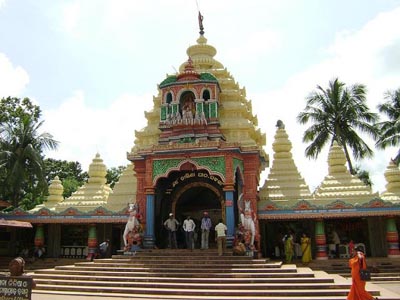
Maa Tarini is the presiding deity for all Shakti and Tantra peeths or shrines in
Orissa. The origin of Shakti or worship of the Earth as a female embodiment of
power is found across many cultures all over the world. In Orissa which has a
high density of tribal population whose religious practices have been
assimilated into the mainstream Hindu faith, the worship of natural formations
such as rocks, tree trunks, rivers is widespread among the tribes. Maa Tarini is
always depicted as a red face with two large eyes and a mark in the middle which
serves as an indication for a nose and also a tilak.
This primitive conception is symbolic of the simplicity of tribal beliefs and
ceremonies. The red colour has been attributed to dyes made out of iron ores or
ocher which are quite plentiful in the state and would thus have been used by
the tribes for anointing and decorating the sacred figures of worship.
The
ornate letters in the background mean "Maa" or Mother in the Oriya language.
They were a much later addition although the Oriya script did change very
slightly over the millennia. In this form she is very similar to the conception
of the Goddess Kali at Kalighat. Although the two are embodiments of the same
divinity, Kali is the Goddess of death and destruction whereas Maa Tarini is the
force of life. Interestingly, two of the names of Kali are Maa Taara and Tara
Tarini.
|
|
Maa Samaleswari, Sonapur, Sambalpur, Odisha.
|
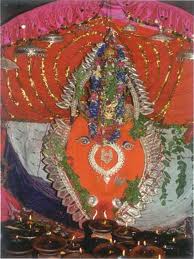
Samaleswari Temple is a Hindu temple in Sambalpur, Western Odisha, India
dedicated to the goddess known as 'Maa', also known among the natives as samalei
maa, meaning Mother Samaleswari. Shree Shree Samaleswari, the presiding deity of
Sambalpur, is a strong religious force in western part of Odisha and
Chhattisgarh state of India. On the bank of the river Mahanadi the mother
goddess Samaleswari is worshipped from ancient times as Jagatjanani, Adishakti,
Mahalaxmi and Mahasaraswati.
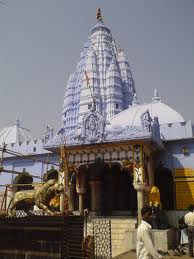
The region in which the temple is situated has a rich cultural heritage.
Sambalpur region is popularly known as Hirakhanda from ancient times. Ptolemy
has described the place as Sambalak, according to Tavernir, the French
traveller, and Edward Gibbon, the English historian, diamonds were exported to
Rome from Sambalpur. The temple is of Sandhara order.
It is built of a kind of stone durable as granite, cemented with lime mortar,
the whole building is plastered, but in the course of time the surface has
become mouldy. The temple comprises two separate structures. The square sanctum
sanctorum enshrining the deity is four step below the 10-foot-wide (3.0 m)
covered circumambulation, which is supported by 12 stone pillars. Eleven parswa
devis (side Goddess), are embedded on the outer wall of the sanctum, so that the
devotees can worship those deities during parikarma through the vaulted
circumambulation.
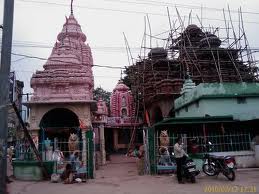
The Idol of Shree Shree Samalai Devi consists of a large block of Granite rock
with an inverted, trunk like projection at the bottom. A shallow cut on her
“Baraha” like face symbolises her mouth.
Traditional Sambalpuri nose
ornament of pure gold hangs down from her imaginary nose Beaten gold leave fixed
on two disproportionate golden eye like depression on the face acts as
substitute for her eyes in an attempt to define the face of the mother deity on
a mass of self shaped rock, the devi’s idol inspires sublime sentiments of awe,
fear, reverence, devotion, love and affection towards all-pervading motherhood.
|
|
Ghanteswari Temple Chipilma, Sambalpur, Odisha.
|
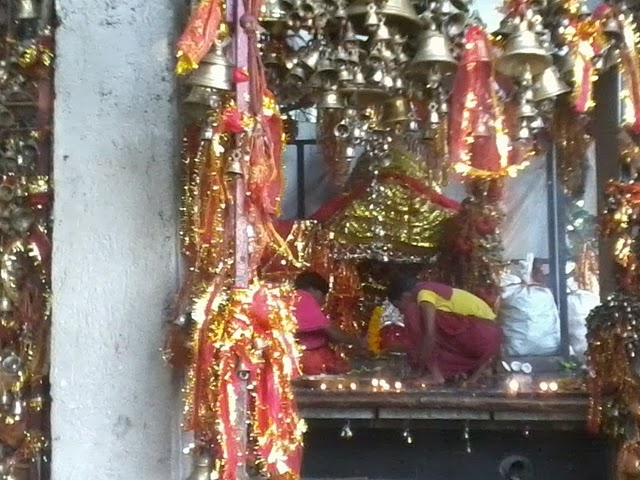
Maa Ghanteswari's Temple is one of the most holiest and beautiful place in
Sambalpur. As the name indicates, there are bells (Ghanti) everywhere. People
offer bell to Maa after their the fulfillment of their wishes. A large number of
pilgrims visit this place everyday from acrooss the state. This is treated as
Heart of Chipilima (a beautiful picnic spot). The specialty of this temple area
is, thousands of bells hanging all around, the only place of its kind in Orissa.
Ghanteswari's Temple is located at 33 kms south-west of Sambalpur and on the
bank of river Mahanadi. It was playing an important role for navigation in the
past. It was called a light house without light! The place got its name from
goddess Ghanteswari. Earlier there were some big size bells on this spot and
with the help of wind those were creating enormous sound which made the
navigators aware of this trechorous spot and they never came near it.
This
area being the conglomeration of three streams of water of river Mahanadi, the
water current here is very trechorous forming a whirlpool. Due to this many
boats were drowned while nearing this spot. Here the wind blows quite heavily
and with the help of it the bells were producing sound. Now after the
construction of Hirakud dam, this spot became safer.
|
|
Charchika Temple - Banki, Odisha.
|
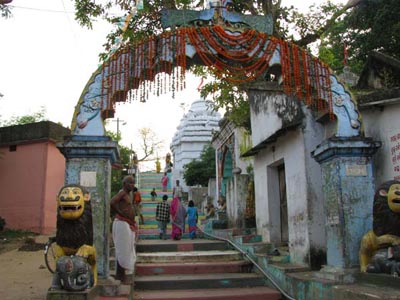
Not only do people from all over the world come to see Lord Jagannath, but so do
gods and goddesses. It is believed that these devas are most fond of seeing the
last ceremony of the day known as Pahuda, after which Jagannath retires to bed.
This occurs some time after midnight.
Three beautiful beds made of ivory
and decorated with the sweetest-smelling flowers, especially white jasmine, are
brought before the deities. Flowers are scattered all over the beds to the sound
of devotional music, and three miniature golden forms representing Jagannath,
Subhadra and Balabhadra are laid down on the beds to sleep. Then arati-the
offering of a lamp is done, the flowers are scattered all around overhead to be
collected by the gods and goddesses as a token of Lord Jagannath's blessing. So
it is also the duty of all the gods and goddesses to be present at the time of
this ceremony every night.
|
|
Biranchi Narayana Brahma Temple, Bhadrak, Odisha.
|
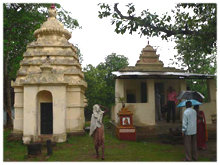
Biranchi Narayana Temple- Located in Palia village of Bhadrak district, which is
17 Kms far from Bhadrak., This is an one and only one old Lord Brahmaa Temple in
World by the god’s creation .Biranchi Narayana Temple draws devotees who are
enchanted with the divine sanctity of the place.
It was rebuilt in 18th
century. How to Reach:- o Air - 130 Kms far from the nearest Airport is
Bhubaneswar. o Rail - 17km far fom Bhadrak Railway Station. o Road - Being on
NH.-5 it is connected by all weather motor-able roads within the state and
neighbouring states and this is just 17km far from Bhadrak.
|
|
Gupteswar temple, Gupteswar, Jeypore, Koraput, Odisha.
|
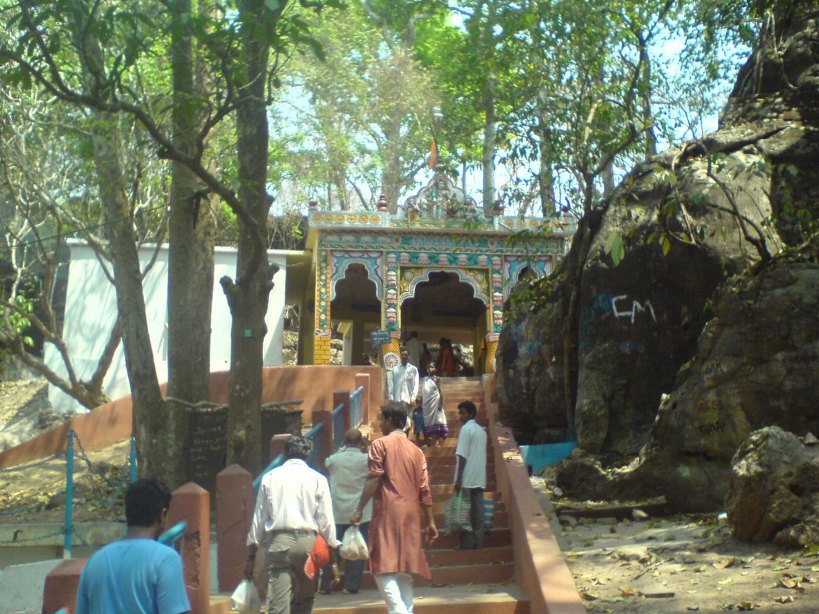
Lord Gupteswar meaning Hidden God, is a cave shrine dedicated to Lord Shiva.
Gupteswar is located in a small town Jeypore in Koraput district of Odisha. The
Siva Lingam is 2m high. It is called Gupteswar(Hidden God) as it was liying
hidden for a long time. This sacred cave is very famous tourism attraction in
Odisha. Devotees from Odisha, Chattishgarh, Madhya Pradesh, Andhra Pradesh come
to Gupteswar during festivals of Lord Shiva.
On Shiva Ratri the Gupteswar In Orissa is flocked by pilgrims all day and all
night long. Men, women and children visit the temple on that auspicious day with
offerings of flowers, fruits, milk, sweets and bhang. The Gupteswar Jeypore
offers quite a feast for the non believers as well, since the cave shrine offers
a panoramic view of the surroundings and makes a beautiful sight in itself.
Gupteswar Jeypore is located 58 km from Jeypore town and regular buses, taxis
and auto rickshaws are available from the town centre to the shrine.
It is
better to hire an auto for the to and fro journey if you are in a group of three
or four. Gupteswar is surrounded by deep forest. So, it will be a very
interesting trip and you will definitely enjoy the natural beauty. You can plan
for picnic also.
|
|
Khirochora Gopinatha temple/ Remuna, Baleshwara, Odisha.
|
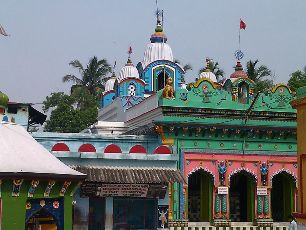
This is one of the oldest temples of Baleshwara district. The temple was built
by Langula Narasinha Deva, the mighitiest king of the royal Ganga dynasty in the
12th century. The deity worshipped here is the incarnation of Shri Krishna and
named a Khira Chora (“Khira” means the highly condensed sweetened milk/Rabiddi
and “Chora” means the person who steals something in Odia/Oriya) after the
incident of the Lord stealing the Khira Bhoga for his greatest devotee
Madhavendra.
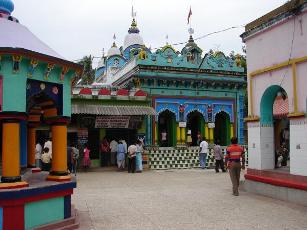
The legends say. From those days Khira Bhoga is served to the Lord daily. The
temple also has the landmarks of Chaitanya deva, the founder of Vaishnva sect
during his visit to the Krushna/Jagannatha temples of Odisha. The temple shops
have delicious Bhoga (food offered to god) items like Khira bhoga, Khaja,
Sandesha, coconut, etc. Healthy and delicious Mahaprasada (Meal of God) is
available during lunch time in the temple premises. The mandap for marriages and
Vrataponayan are available in cheaper price in the temple premises.
|
|
Alarnath Temple at Brahmagiri, Odisha.
|
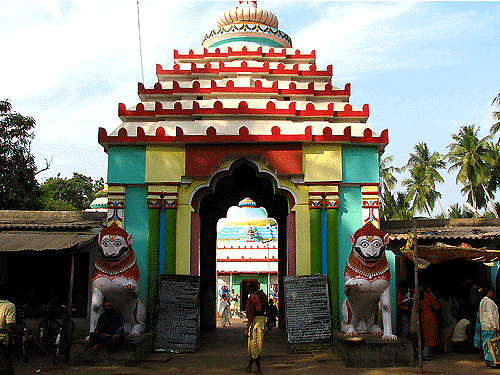
After the Snana Purnima in the month of Jyeshta, Lord Jagannath, Lord Balabhadra
and Lord Subhadra are kept away from public view, for a period of fifteen days,
and all the daily rites in the Shreemandira are suspended. According to Skanda
Purana when Raja Indradyumna installed the wooden deities, he had arranged this
bathing ceremony. During this period, popularly known as 'Anasara' or
'Anabasara' (literally meaning 'improper time for worship), instead of having
darshan in Jagannath Temple, Puri peoples believe that Lord Jagannath during
this time manifests as Alarnath Dev, at the Alarnath temple in Brahmagiri, which
is about 23 km from Puri.
Due to ritualistic bathing using 108 vessels(suna garas) of water, there is a
popular belief that the deities get fever and the their idols get discoloured.
So the Supreme Trinity take rest in 'Anasara Ghara' and are treated by the Raja
Vaidya(King's Physician) using Dasamulas(medicine).
During these fifteen
days the Daitas (descendants of Viswavasu, the Savara), repaint and restore the
Deities and Jagannath's fineries. On the sixteenth day, called
'Netrotsava'(festival for the eyes), the deities give the 'Navayauvana' darshan
in their new appearance. According to the Shilpa Shastras and Agamas, the
deities become suitable for worship only after the rite of
'Chakshurunmilana'(opening of the eyes) Thousands of devotees visit the temple
during the period to have a darshan of Lord Jagannath as Alarnath Dev and to
have the delicious Kheer bhog (Prasad) at the Alarnath temple. Pujapandas of
Puri say as this Alarnath is the alternate besha of Lord Jagannath.
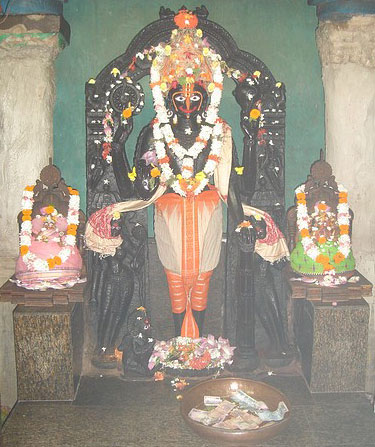
During the 'Anasara' period, the great devotee Prabhu Chaitnya Dev had visited
the temple, and had the Darshan of Lord Jagannath as Alarnath. Historians point
of view , Sri Prabhu Chaitanya Dev was visiting all day to Jagannath Temple for
Lord Jagannath Darshana, but after Snana Purnima was over, Sri Prabhu Chaitanya
Dev was not able to see Mahaprabhu in the temple and asked to all Pujapandas as
where is my Prabhu Jagannath ? Pandas replied to him, as Sri Prabhu Chaitnya
Maharaj ji now you can't see Jagannath as He is suffering from fever ,
then Sri Prabhu Chaitanya Devji told them that if he would not get to see Him
today then he will commit suicide in the Ocean, this time Lord Jagannath Himself
told to Sri Prabhu Chaitanya Dev- O Chaitnya, I am doing a 'leela' in the form
of Brahma in Brahmagiri, now you come to this place to have My Darshan, It is
believed that devotees get the same 'phal' here as they desire from a darshan of
lord Jagannah in Puri.
The place got prominence when Sri Chaitanya came to
see Alarnath as Lord Jagannath in the sixteenth century. Since then the place
has become popular as the temporary abode of Lord jagannath.During these days,
same amount of Prasad is offered to Alarnath everyday as it happens in Jagannath
Temple in Puri.
It is believed that within these fourteen days if one sees
lord Alarnath, s/he is free from all the sins. Here the lord is offered by
'Payas' or 'Kheer' Bhog prepared with milk and rice. This temporary abode of
lord Jagannath is believed to be another specialty of Jagannath Cult.
In this temple Lord Vishnu is worshiped as Lord
Alarnath. The deity has four arms, He holds chakra inHIS upper right hand, Lotus
in his lower right hand, Conch in his upper left hand and club in his lower left
hand, Lord Vishnu's carrier eagle , known as Garuda, kneels at the feet of the
deity with his hands folded in prayer position. The deities of Lord Krishna's
queens Rukmini and Satyabhama are also find inside the temple.
Deity of
Lord Chaitnya is also founded inside the temple. There os a stone slab in front
of the deity which bears impression from Lord Chaitnya body. When Lord Chaitanya
first lay in full respect in front of Lord Alarnath, the stone below Lord
Chaitnya melted from His blissful touch . There is a lake behind the temple
where Chandan Yatra is celebrated for 21 days in every year.
|
|
Sarala Temple, Jhankada, Jagatsinghpur, Odisha.
|
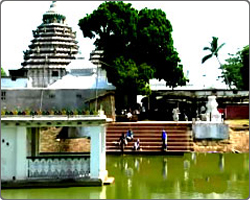
The Sarala Temple is located 75 km from Bhubaneswar, at Jhankad in
Odisha/Orissa. It is 15 km away from Jagatsinghpur town. The main deity of the
temple is Goddess Sarala. Here Goddess Saraswati is worshiped as Goddess Sarala.
Mahabishuba Sankranti, and Raja Sankranti are the main festivals celebrated
here.
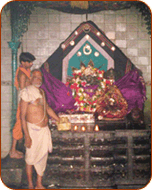
If you wish, then visit the holy shrine and seek the blessings of MAA SARALA.The
Celestial Mother always fulfills the wishes of her devotees. She is the goddess
who blessed Sarala Das and he became the renowned poet.
|
|
Nilamadhava Temple, Kantilo, Nayagarh, Odisha.
|
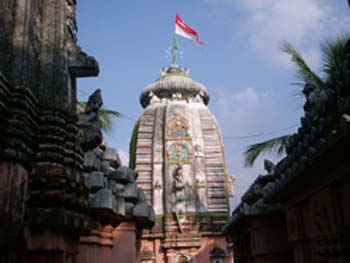
Kantilo nilamadhaba temple is very old and famous Vaishnav temple which is near
to the bank of Mahanadi temple. which is present near to the twin hills with a
surrounding of green forests A permanent flow of holy water from the feet of
Lord Nilamadhaba. Lord Siddheswar are the highlights of the place. Lord
Nilamadhaba occupies a prominent position in the cult of Lord Jagannath. Lord
Siddheswar are the highlights of the place.
Best for: The most popular picnic spots in Orissa which is 100 kms away
from the capital and 33 kms from Nayagarh town.90 and 12 km from Khandapara. *
Best place for Bol Bom Siva devotees , taking water from Mahanadi. Famous for:
1. Maghasaptami Festival is the best festival over here. 2. It's famous for
Brass and bell metal utensils.
How to reach:- * 100 km from Bhubaneswar , by bus. * 33 km from Nayagarh.
* 12 km from Khandapara.
|
|
Tara Tarini Temple, Ganjam, Odisha.
|
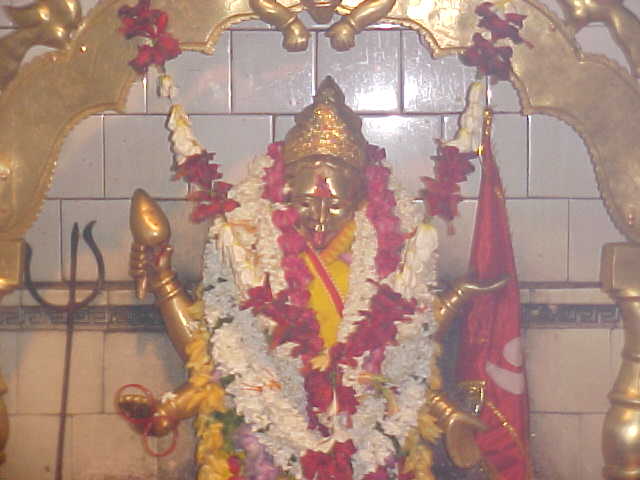
Goddesses Tara-Tarini have been regarded as the presiding deity(Ista-Devi)in
almost every house in South Orissa. This important and famous Shakta Pitha is
situated on a hill top at a distance of 30 Kms towards north of Brahmapur on the
south bank of river Rushikulya. The height of the hill is approximately 708ft.
and the total area spreading over 180 Acres of land. The hill is popularly known
as Tara Tarini Hill(Parvata) and is surrounded by natural beauty .
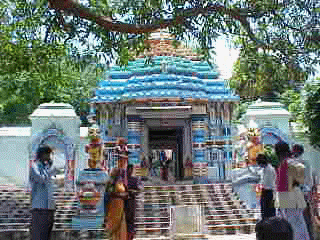
The picturesque scenery of the temple,from the hill top down to the bank of
river Rushikulya gives immesse pleasure and a thrilling experience of nature and
divinity to each pilgrim - visitor and often captivates its mind and soul. There
are 999 steps on the front side of the hill leading to the temple and also a
pucca road for vehicle on the backside of the hill facilitating devotees to
reach at the Pitha. Provisions of electricity, drinking water and a small market
complex at the site with articles of puja /archana are additional features of
this Pitha.
|
|
Akhandalamani Shiva Temple (ଆଖଣ୍ଡଳମଣି ମଂଦିର), Aradi, Bhadrak, Odisha.
|
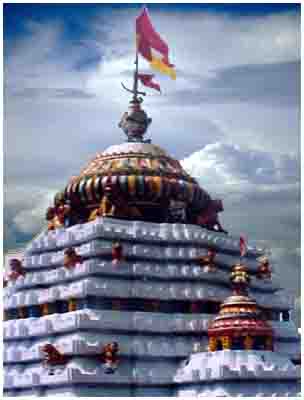
This famous Akhandalamani temple, the abode of "Lord Siva" is nicely located in
the bank of river Baitarani, at Aradi, 37km away from the district head quarter
of Bhadrak towards east by road via Asurali, Kothara and Dhusuri. This place is
also linked with Chanbali by boat through the river Baitarani. From Chandbali
ferry ghat to Aradi it will take hardly 2 hrs by boat.
|
|
Biraja temple, Jajpur Town, Jajpur, Odisha.
|
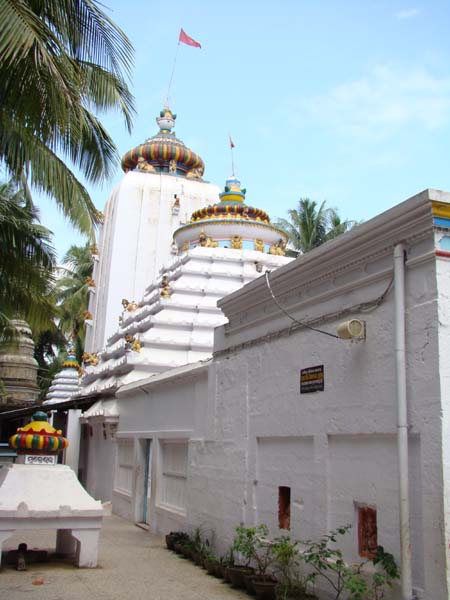
This temple is also called Biraja Devi or Girija Devi temple. It is one of 51
shakthi peethams and it is where Sati's navel fell. The temple was built in 13th
century. Jajpur town has grown around temples. The main temple is that of
Birajadevi(biraja mandir). Mounted on a lion she carries a spear with one arm
and holds the tail of Mahishasur with the other. Festivals are held at Durga
Puja & Kali Puja.
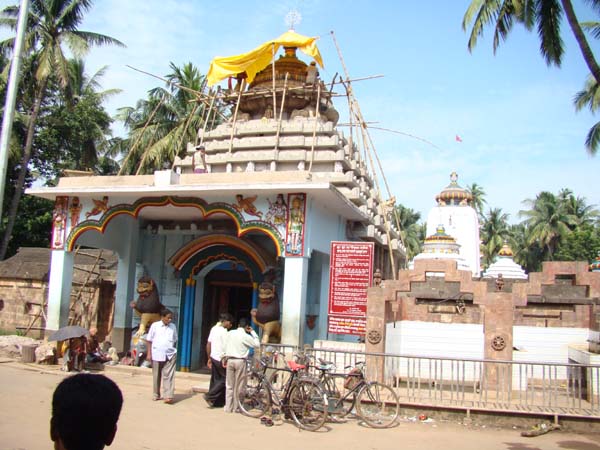
Jajpur is another Hindu pilgrimage. It was named after king Jajati Keshari. In
course of time this became Jajpur. It was once the capital of Orissa. Its
distance from Calcutta 337 km, Cuttack is another 72 km and Bhubaneswar 100 km
more. Navi gaya is found here inside the temple. The materials put in the Navi
Gaya is supposed to go to Samudra(Sea). Car festival is also seen here during
Durga Puja.
|
|
Harishankar and Nrusinghanath, Odisha.
|
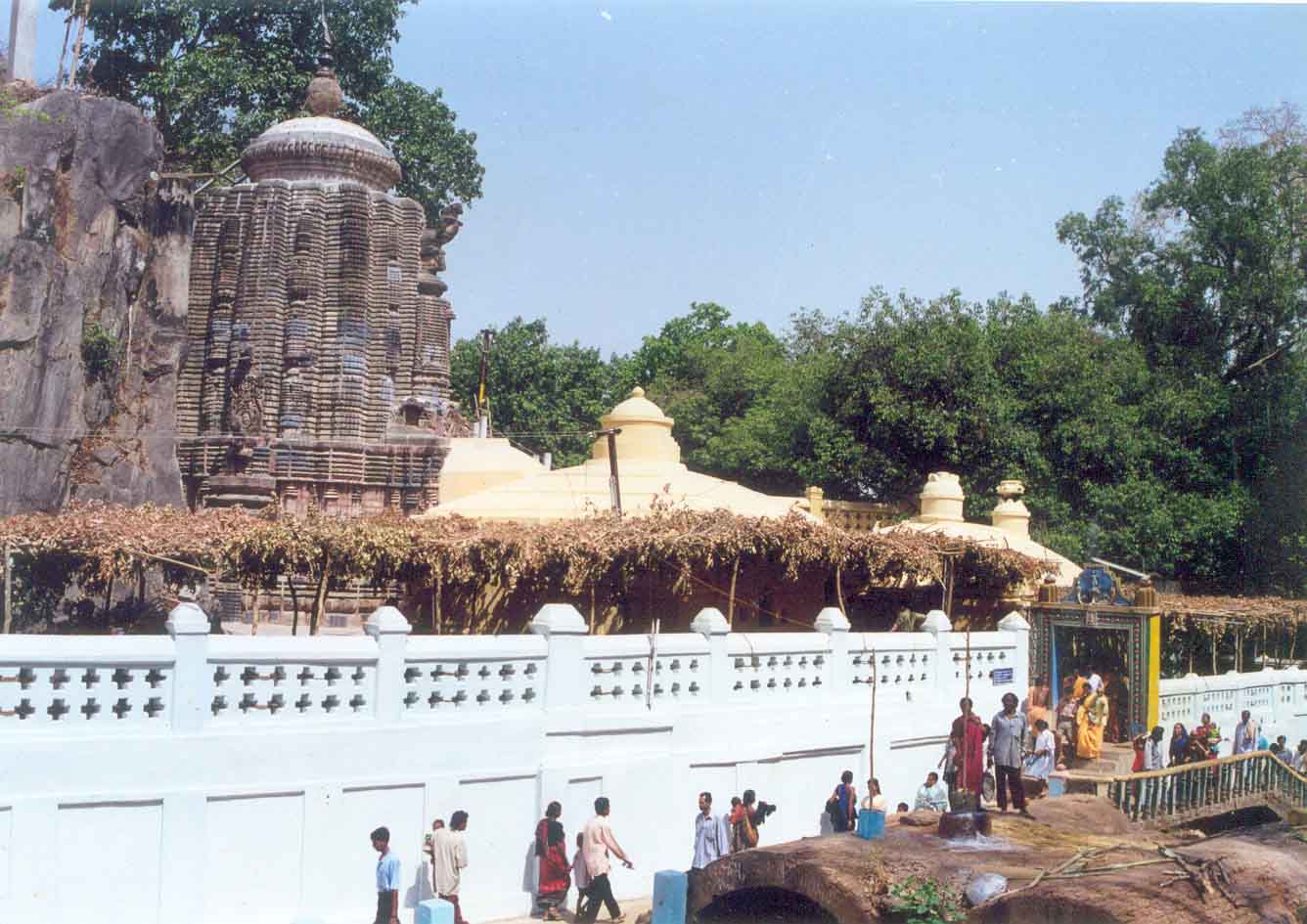
With out considering the tourism potentiality, when state government is
interested for mining in the Gandhamardhan hill, the decision of the
Chhattisgarh government to spend Rs.two crores for the development of the
Nrusinghnath, natural tourist spot located on the foothill of Gandhamardhan
makes everyone happy.
Gandhamardhan, the famous range of hill which
covers Nuapara, Bargarh and Balangir district of the state is well-known for its
medicinal value of having thousands of rare species of medicinal plants.
Nrusinghnath in one side and Harisankar on the other side attract lakhs of
pilgrims every year. But over the past, state government does not give much
attention on the development of these spots because it is interested on the
bauxite that reserves in the hill.
|
|
Cuttack Chandi Temple, Cuttack, Odisha.
|
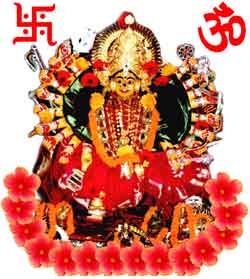
Chandi Temple (5 km)The temple of Goddess Chandi, the presiding deity of the
city, to the south of the Barabati area is visited by hundreds of devotees
everyday. The image of the deity is older than the temple. The present piece of
land, where the holy temple is located, was lying fallow before.
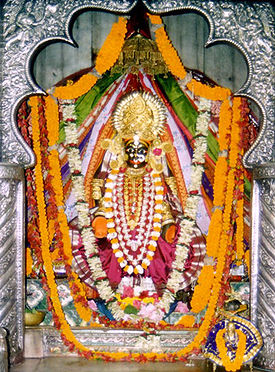
Late Sri Hansa Panda, who happens to be the Purohit of the then King of Kanika,
used to graze cattle’s and sheep’s in the land. One day Sri Panda was feeling
tired and took rest on a heap of dry mud present there. While taking rest,he
experienced a strange unusual feeling within himself.
Surprisingly on the same night, The Goddess
“Chandi” appeared in his dream and requested him to take her out of the land.
There after he went to the King and told everything about the strange experience
he had that night. With the help of the king, Late Hansa Panda dug up the same
piece of land.
It is being said that around forty numbers bullock carts of
Red Sindoor came out while digging and then emerged The Deity of Maa Katak
Chandi. Then the temple was built on the same land. Here in Cuttack, people
strongly believe Maa Katak Chandi as The Living Goddess.
|
|
Kakatpur Mangala Temple, Odisha.
|
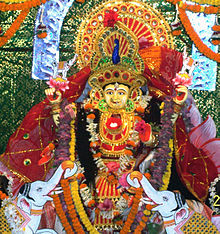
The Kakatpur Mangala Temple is a temple in Kakatpur, Puri, Orissa. Dedicated to
Goddess Mangala a manifestation of the Mother Goddess Durga, the Temple is
located in the town of Kakatpur in the Puri District of Orissa. The temple is
built in typical Kalinga style and is a major pilgrimage for devotees of Shakti
cult.
Pilgrims frequent the temple seeking boons from Maa Mangala.There is
a bed made of solid stone on which it is said Maa Mangala rests after touring
the entire universe everyday.As if to attest to this the bed looks worn out in
just the same way it would if it were in use for centuries.
|
|
Dhabaleswar, Cuttack, Odisha.
|
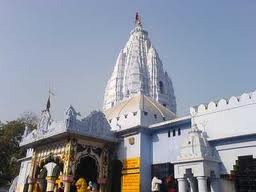
The name Dhabaleswar ( Dhabala or White + Eeswar or God ) is attributed to a
miracle performed by Lord Shiva. Once a thief stole a black bull calf from a
village and fled to a Shiva temple. He hid himself with the calf in the sanctum
while the angry crowd waited outside the temple. The crowd could clearly hear
the calf calling out. The thief prayed fervently to Lord Shiva to deliver him
from the crowd.
Taking pity on him, the Lord appeared as a
Sanyassin before the crowd and asked them the cause of their agitation. On being
told that they suspected the thief of hiding in the sanctum along with the black
calf, the sanyassin brought the calf outside to dispel their doubts.
The
calf turned out to be white, seeing which the crowd let the thief go. The
sanyassin disappeared and the thief realized who had come to his aid. He
confessed and apologized to the crowd. He took a vow to spend the rest of his
life in the service of the Lord. The act of turning a black calf to white caused
Lord Shiva to be also known as Dhabaleswara.
|
|
Goddess Hingula, Talcher, Odisha.
|
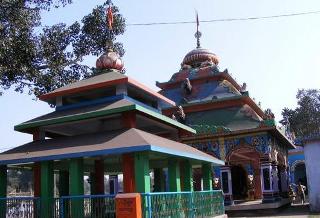
It is located at a distance of 14 km. from Talcher . There is a temple Goddess
Hingula here .Hingula Yatra is observed here for 9 days during the month of
Chaitra . In the fifteenth Century A.D., the illustratious poet Sarala Das has
described Goddess Hingula in his Mahabharat as the Manifestation of the Goddess
Sarala. In fact he always worshipped Goddess Sarala asGoddess Hingula. It is
believed that one can achieve his desired object if he/she worships or mediates
on Goddess Hingula. It is also believe that cooking foods become delicious
through the blessings of the Goddess.
It is described in the Mahabharat that Goddess
Hingula was worshiped by King Nala of Surya Vanshi. It is by her grace that king
Nala was able to prepare Gouri-Sauri Paka . Thus the name of Goddess Hingula is
associated with cooking with perfection.
The successors of king Nala of
Vidarbha also worshiped the Goddess Hingula. As Nala was the King of Vidarbha,
his successors are worshiping Goddess Hingula from generation to generation. The
holy place (peetha) of the Goddess Hingula is situated on the bank of the river
Simhada in the West of Talcher.
|
|
Budhi Thakurani, Angul, Odisha.
|
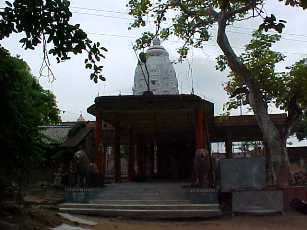
The temple of Budhi Thakurani is situated at Angul town. Near the temple , an
exact replica of Puri Jagannath Temple is built . It is famous as Saila
Srikhetra . The presiding deity of Angul is Goddess Budhithakurani . Angul has
earned celebrity as a Sakta Centre since 8th Century A.D. with the rise of the
Sulkies on its soil. Goddess Budhithakurani is worshiped in the form of a stone
icon covered with vermellion . The shrine draws huge crowd throughout the year.
Pilgrims of different parts of Orissa visit the place for a darshan of the
Goddess.
|
|
Sri Ladukeswar, Nayagarh, Odisha.
|
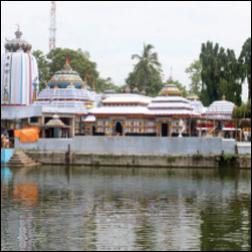
Located 14 kms away from Nayagarh, Sarankul stands proud with the 15th century
shrine of Sri Ladukeswar, popularly known as Ladu Baba. The presiding deity here
is known to be the combined form of Hari (Vishnu) and Hara (Shiv) as is the case
with Sri Lingaraj in Bhubaneswar. The festivals and rituals of Sri Ladukeswar
are also similar to that of the Lingaraj temple. This shrine is the most
prominent one from amongst a good number of Shaivite shrines dotting the region.
Pilgrims from far flung places flock to Sarankul on the occasion of
Mahashivaratri.
Tourists can avail medical facility at CHC, Odagaon which is nearest to the
place. SBI Odagaon is the nearest Bank to the spot. Tourists can reach Sarankul
by choosing the state highway that is connected through Bhubaneswar Odagaon
road. It is located approximately 100 kms away from state capital Bhubaneswar
and 14 km away from district head quarter Nayagarh.
|
|
Sri Hanuman Vatika, Rourkela,Sundergarh, Odisha.
|
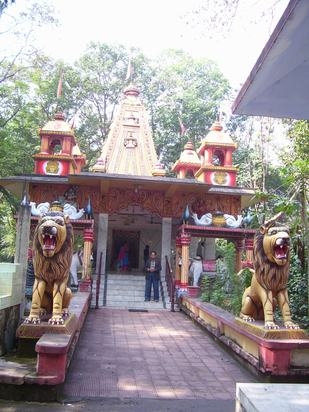
The garden was renovated and inaugurated by the chief minister, the late Biju
Patnaik of Odisha. The height of the statue is 75 feet. Every year on 23
February it celebrates its foundation day. Other temples inside the premises are
12 Jyotirlingas, Batta Mangala Devi, Sarala Devi Temple, Jagannath Temple,
Lakshmi, and Santoshi Mata Temple. One Kalyan Mandap is built to accommodate
public gatherings and functions. The Hanuman statue was built by Sri Lakshman
Swami of Hyderabad.
|
|
Chandaneswar Temple, Digha,Baleswar, Odisha.
|
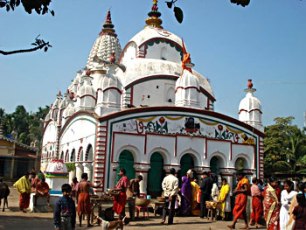
Another 6 km towards west from Digha, there is Chandaneswar, which is famous
for a Shiva Temple. In the month of Chaitra i.e., in the last month of Bengali
calender year, an annual fair is organised around this temple. Pilgrims from all
over the country, especially from Orissa, Bengal, Bihar come to this fair.
There are bus/rickshaw services from Digha to Chandaneswar. Apart from this,
Calcutta-Chandaneswar, Howrah-Balasore, Digha-Baripada buses ply via
Chandaneswar. Information:Chandaneswar is located 88 Km from Balasore and famous
for Chandaneswara temple. Description:Chandaneswara temple is a holy place.
About 4 km from Chandaneswar and 4 km from Digha in West Bengal is the tranquil
beach at Talasari, surrounded by casuarina groves.
|
|
Manikeswari Temple, Bhawanipatna,Kalahandi, Odisha.
|
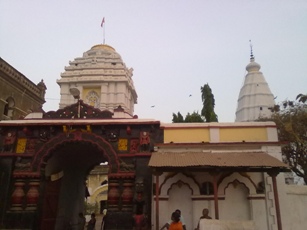
Manikeswari is one of the popular Hindu deity in Orissa. There are many
Manikeswari temples present in Western and Southern part of Orissa. Manikeswari
temple in Bhawanipatna is well recognized in Orissa. Manikeswari is also the
primary deity associated with the royal family of Paralakhemundi in Gajapati.
Chhatar Jatra is one of the most popoular festival of Manikeswari at
Bhawanipatna. Khandasadhaka is a festival associated with Manikeswari in
Paralakhemundi.
|
|
Belkhandi Siva Temple, Bhawanipatna,Kalahandi, Odisha.
|
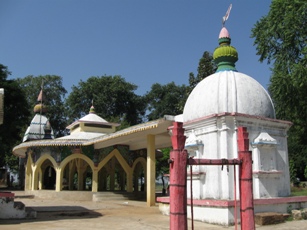
Situated on the confluence of the river Tel and Uttei, two tributaries of the
river Mahanadi, Belkhandi has gained prominence as a centre of religious
activities and archaeological importance with a picture-sque site. Besides the
temples now standing therein, ruuins of 12th Century monuments have been
excavated from there in the recent past.
Among the sculptures unearthed
images of Sapta Matruka (Seven Mother Goddesses) and Uma Maheswar
arenote-worthy. The ruins of Belkhandi are preserved in a small museum adjacent
to the temple premises. It is also an ideal site for an outing. This place is 67
K.Ms from Bhawanipatna.
|
|
Goddess Ramchandi Temple, Angul, Odisha.
|
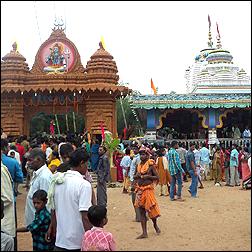
This village is situated at a distance of 28 Kms, on Angul- Bagedia road. The
village is known for its shrine dedicated to Goddess Ramchandi. She is believed
to be possessed of great powers. It is believed that by worshipping Goddess
Ramchandi sterile women will obtain children. On the foundation of the old
temple one magnificent temple was constructed. A Yatra is held here on the
second day of Krushna Pakshya Bhadra.
This Yatra is known as Ramchandi
Yatra or Kaduali Yatra (July- August). This Yatra is celebrated with big
ceremony every year. Thousands of people attend this Yatra.Kosala is 28 Kms away
from Angul. One can reach Angul by bus or train. There is regular bus service
available to Kosala from Angul.
|
|
Bhimakanda Sleeping Vishnu Temple, Angul, Odisha.
|
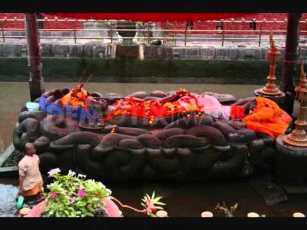
A rock art sleeping image of Lord Vishnu is located at Bhimakanda village about
30 km north of Talcher town and 50 km from Angul & on the right bank of river
Brahmani . The imagedates back to 8th – 9th century A.D. and has the distinction
of being the largest sleeping idol of Lord Vishnu. The image reclining to its
right is about 42 (126.5 CM) long & 8 wide.
|
|
|
|